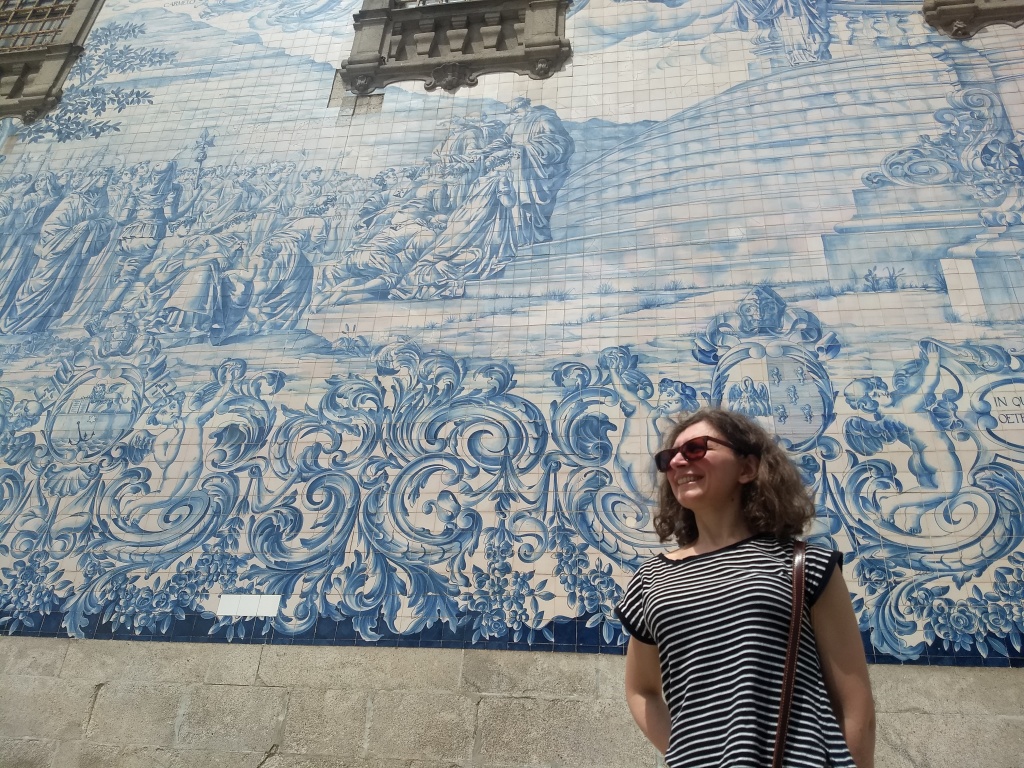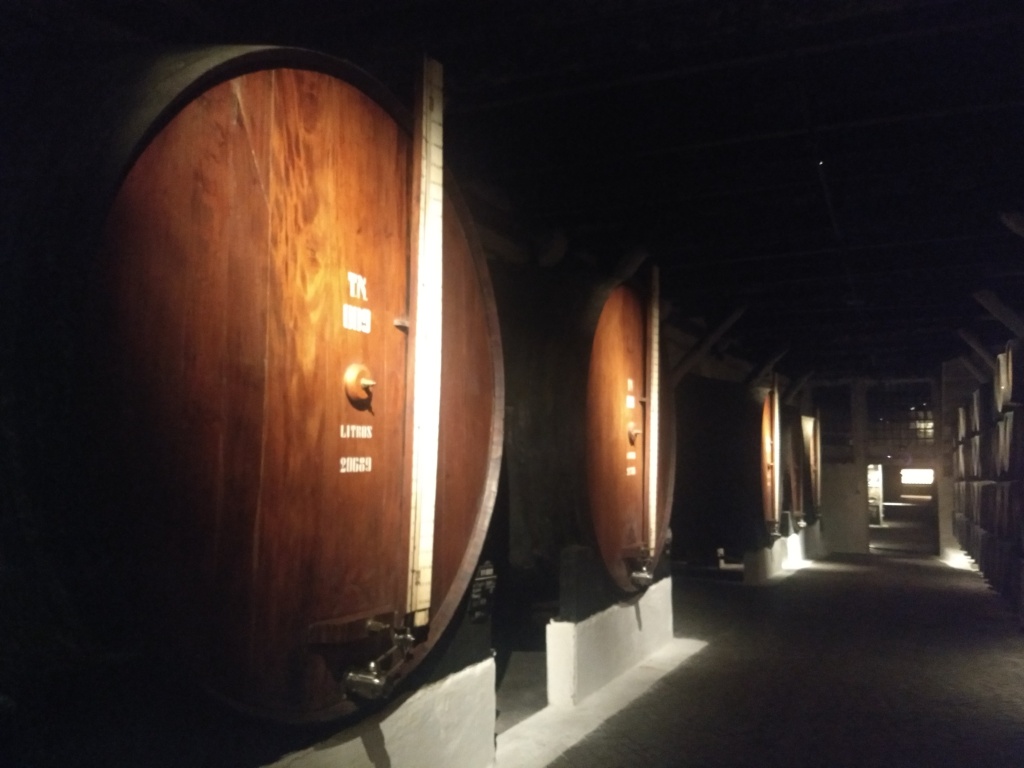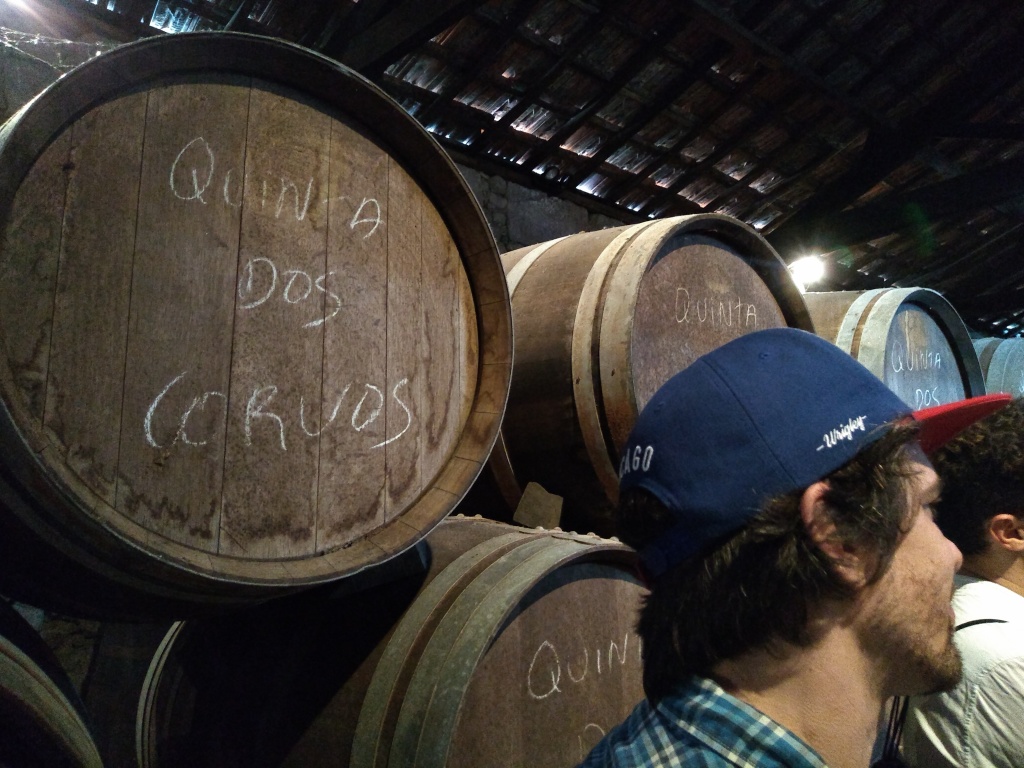
Taking the country road
Moving away from the city, we visited the magnificent Avelada vineyard on the hills near Penafiel!
(missed Part 1?)
In the morning we woke up a bit dizzy, but nothing that the abundant and delicious Serra do Pilar B&B breakfast couldn’t fix, bravo to them. We spent the morning visiting parts of town we hadn’t seen the day before, the Jardins do Palacio de Cristal among them (loads of peacocks, and for some reason, chickens). Right after lunch we went to pick up the car near the airport, and then we left the city to go to Penafiel, the village where the wedding was.
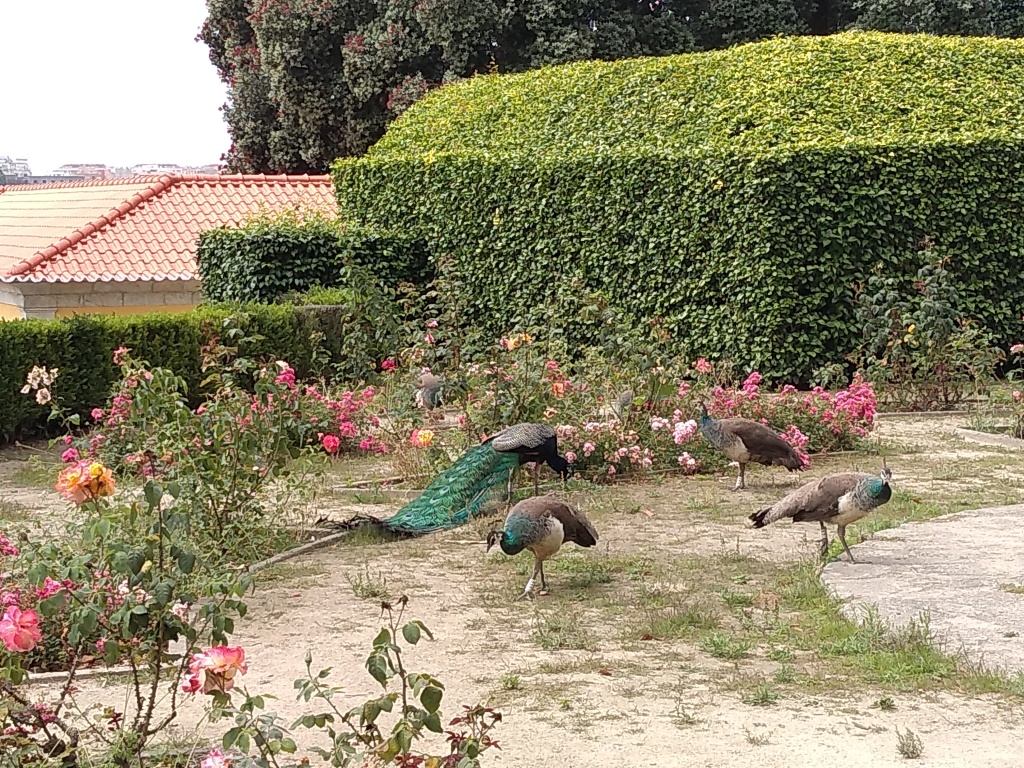
The village is about 40 minutes from the airport, which gave us enough time in the afternoon to visit the Quinta da Aveleda vineyard, in the Vinho verde DOC area. The Quinta was funded by Manoel Pedro Guedes about 150 years ago, and has been with the same family for 5 generations. They own at least four vineyards in Portugal, one of them in the Douro region as well. They produce many types of wine, Port and brandy. The vineyard is adjacent to a huge and really beautiful Victorian garden, full of stories and anecdotes about the family. We were surprised to find a statue of the green men inside, other than the peacocks (again…noisy, but still better than Leith’s out-of-control seagulls).

After visiting the estate and mostly the garden, the guide conducted us in the warehouse where they mature brandy: curious Gianluigi asked, but none of these casks are shipped to Scotland afterwards (d’oh!), although some of their brandy is finished in former Port casks. The tasting comprised 3 glasses of wine: a vinho verde, a white wine from the Bairrada region and a red from the Douro Valley. The latter two were quite exquisite, but we took the first with us: it had some very unusual and interesting citrousy notes, and we could totally see it paired with grilled squids or Scottish scallops. Plus, it was the local one so it made more sense. We also got a tasting box of their brandys (the 5y, 12y and 30y), something we were very curious about (not tried yet, we’ll let you know!).
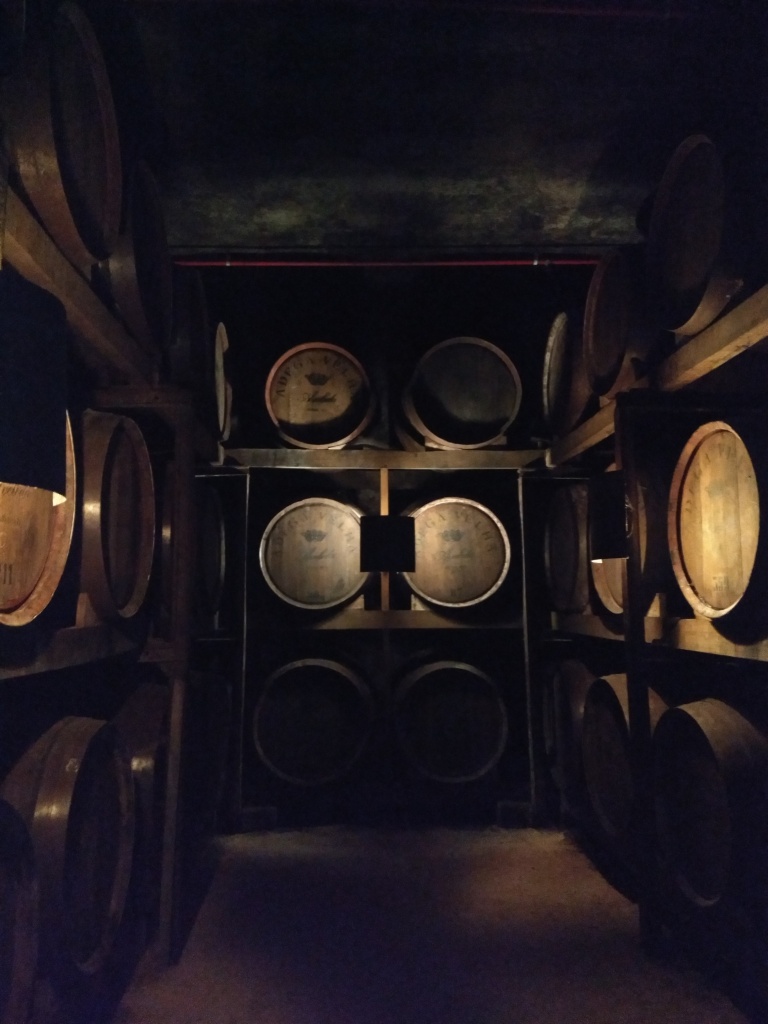

In the evening we had a pre-wedding party with the young attending the wedding, and with “young” meaning 30 to 40 more or less. It was very nice to see Paul and Nelly, Gianluigi hadn’t seen them for a few years, and for Teresa it was the first time.
The wedding was at 4pm on the day after, so we had all the morning to treat us as…old people. We went to a thermal pool near Penafiel, and afterwards to the Castro of Monte Mozinho, a Roman archaeological site.

The wedding was celebrated in an old monastery, followed by a luscious dinner at a close by estate and a lot of partying. At the end we tried a J&B blended scotch 15y at the bar, which wasn’t as bad as we expected. It was not the first blended scotch we saw in Portugal with an unusual age statement: Grant’s 8y, J&B 15y, William Lawson 12y, other than the Old Parr (12y), which are not sold at all in Scotland. We were very restrained with drinking, so in the morning we woke up refreshed and we could drive straight to Porto to return the car. The airport, the centre of the city, Vila Nova de Gaia and the train stations are all very well connected by a quick subway train, which allowed us to carve out another couple of hours in the city. Do you really need to ask what we did?

This time we went to Kopke (randomly chosen because Gianluigi found an unopened bottle of it in his late grandmother’s basement). They had no warehouse there, but we could choose over a range of tastings in their three-story venue. We chose a nicer one, which started with a dry white port: this is a variant to the regular whites, with the aguardente being added later during formation, after 7-8 days, so the sugars are almost gone (hence “dry”): we found it much better than the regular whites. Then we had a 2004 vintage ruby, a 10y white and two delicious tawny-s, a 20y and a 1978 Colehita. All paired with chocolate, which was a plus!

We finally took a train to Lisbon, where we spent the last few days of the holiday, trying wines and sightseeing. The city is a must visit if you’re around Europe (although we liked Porto better!). We walked a lot and did the ‘classics’: went to Belem for its famous tower and monastery and for its even more famous pasteleria, got lost in the charming Alfama neighbourhood, checked out as many miradouros (viewpoints) as possible, and even squeezed in half a day at the beach in Cascais. All this while enjoying great meat and seafood. Wine-wise, we found out that the area near the capital is home of great reds as well, some as good as the Douro Valley ones.



So, the mystery: where do ruby port casks come from? We asked a few times, even the guy at Kopke couldn’t reply. Our best guess is that they are seasoned with ruby port, similar to what they do with sherry in the majority of cases today. We couldn’t really understand if ruby ports could be matured in small casks instead of large vats, maybe for smaller producers? No clue. We will post updates, if we find out! [August 2022 update: a whisky expert told us that yes, ruby port casks are seasoned casks.]
Port can be an excellent type of cask to mature or finish whisky, although still a try-before-buying for us. Similar to what we did when we visited Grattamacco in Tuscany, understanding a bit more the drink that contributes to give a certain character to the casks was very interesting, and we are happy to share some of the little knowledge we acquired with you!
Until the next time, slainte!
Visit to the Quinta de Aveleda and its Gardens, Premium Tasting
Price: 40.00 Euros pp (June 2022)
Duration: 1h 30m
Tasting: Vinho verde Parcela do Convento 2019, Douro Superior Vinhas do Sabor 2018, Arco d’Aguieira 2018
Target: tourists and gardens lovers
Value for money: Ok
Highlights: the Victorian gardens
Link: https://www.aveleda.com/en
Kopke Tasting
Price: 43.00 Euros pp (June 2022)
Duration: 45m
Tasting: dry white port, 2004 vintage ruby, 10y white, 20y tawny, 1978 Coheita
Target: tourists and port wine lovers
Value for money: very good
Highlights: the 1978 Colheita
Link: https://kopke1638.com/

